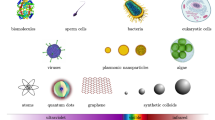Abstract
The multiple Δt strategy is an inexpensive procedure that can be implemented with any usual particle image velocimetry (PIV) set up. The only requirement is acquiring different series of PIV image pairs, setting a different time between laser pulses for each series. With this additional information, robust procedures for error assessment are possible. Within this strategy, this paper offers new discoveries that correct and complement previous works by the authors. Nogueira et al. (Meas Sci Technol 20–7:074001, 2009) addressed the tasks of assessing CCD readout and peak-locking bias errors separately. In this paper, a new approach, of general application to PIV, is proposed for assessing both errors simultaneously. Additionally, it unveils the effect of the flow variability on the local amplitude of the peak-locking bias. In a different work, Nogueira et al. (Exp Fluids. doi: 10.1007/s00348-011-1094-2, 2011) have focused on assessing peak-locking rms error. That paper achieved only order of magnitude estimations of the rms error because one of its components was overlooked. Here, the new term is included and the assessment obtained is good enough to correct rms systematic errors, improving the measurement of the turbulent kinetic energy or similar flow magnitudes. After describing the strategies, the application to selected synthetic and real cases is presented, validating the modeling of the errors behavior when dealing with turbulent flows. The results indicate the possibility to assess bias errors in the range from 0.01 to 0.2 pixels for both sources (peak locking and CCD readout) simultaneously. Furthermore, the previous works simply assessed the magnitude of the errors, but the results of the new procedures proposed here, in some cases, are good enough to correct the measurement itself. In addition, the determination of zones where these errors are not the dominant ones is presented.












Similar content being viewed by others
References
Astarita T, Cardone G (2005) Analysis of interpolation schemes for image deformation methods in PIV. Exp Fluids 38–2:233–243
Di Florio D, Di Felice F, Romano GP (2002) Windowing, re-shaping and re-orientation interrogation windows in particle image velocimetry for the investigation of shear flows. Meas Sci Technol 13–7:953–962
Lecuona A, Nogueira J, Rodríguez PA, Acosta A (2004) PIV evaluation algorithms for industrial applications. Meas Sci Technol 15–6:1027–1038
Legrand M, Nogueira J, Lecuona A, Nauri S, Rodriguez PA (2010) Atmospheric Low Swirl Burner flow characterization with Stereo-PIV. Exp Fluids 48–5:901–913
Lourenco L, Krothapalli A (1995) On the accuracy of velocity and vorticity measurements with PIV. Exp Fluids 18–6:421–428
Marsaglia G, Wan Tsang W (2000) The Ziggurat method for generating random variables. J Stat Softw 5–8:1–7
Nauri S, Nogueira J, Lecuona A, Legrand M, Rodríguez PA (2008) Limits and accuracy of the Stereo-LFC PIV technique and its application to flows of industrial interest. Exp Fluids 45-4:609–621
Nobach H, Tropea C (2005) Improvements to PIV image analysis by recognizing the velocity gradients. Exp Fluids 39–3:612–620
Nogueira J, Lecuona A, Rodríguez PA (2001) Identification of a new source of peak-locking, analysis and its removal in conventional and super-resolution PIV techniques. Exp Fluids 30–3:309–316
Nogueira J, Lecuona A, Nauri S, Legrand M, Rodríguez PA (2009) Multiple Δt strategy for PIV error correction in a hot propulsive jet facility. Meas Sci Technol 20–7:074001
Nogueira J, Lecuona A, Nauri S, Legrand M, Rodríguez PA (2011) Quantitative evaluation of PIV peak-locking through a multiple Δt strategy: relevance of the rms component. Exp Fluids 51–3:785–793. doi:10.1007/s00348-011-1094-2
Raffel M, Willert CE, Kompenhans J (1997) Particle image velocimetry—a practical guide. Springer, Berlin
Waczynski A, Polidan EJ, Marshall PW, Reed RA, Johnson SD, Hill RJ, Delo GS, Wassell EJ, Cheng ES (2001) A comparison of charge transfer efficiency measurement techniques on proton damaged n-channel CCDs for the Hubble Space Telescope wide-field camera 3. IEEE Trans Nucl Sci 48–6:1807–1814
Westerweel J (1998) Effect of sensor geometry on the performance of PIV. 9th International symposium on applications of laser techniques to fluid mechanics (Lisbon, Portugal: Instituto Superior Técnico)
Whitmore B, Heyer I, Casertano S (1999) Charge-transfer efficiency of WFPC2. Publ Astron Soc Pac 111–766:1559–1576
Willert C, Raffel M, Kompenhans J, Stasicki B, Kahler C (1998) Recent applications of particle image velocimetry in aerodynamic research. Flow Meas Instrum 7–314:247–256
Acknowledgments
This work has been partially funded by the CoJeN European project, Specific Targeted RESEARCH Project EU Contract No. AST3-CT-2003-502790, the Spanish Research Agency grant ENE2006-13617 and the Madrid Community grants CCG08-UC3M/ENE-4432 and CCG10-UC3M/ENE-5126. The authors would like to thank the technicians M. Santos and C. Cobos for their assistance in the measuring devices set-up.
Author information
Authors and Affiliations
Corresponding author
Rights and permissions
About this article
Cite this article
Legrand, M., Nogueira, J., Ventas, R. et al. Simultaneous assessment of peak-locking and CCD readout errors through a multiple Δt strategy. Exp Fluids 53, 121–135 (2012). https://doi.org/10.1007/s00348-011-1248-2
Received:
Revised:
Accepted:
Published:
Issue Date:
DOI: https://doi.org/10.1007/s00348-011-1248-2




